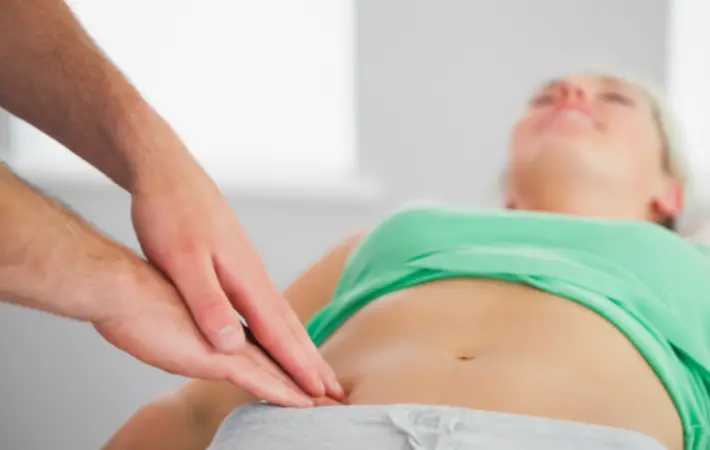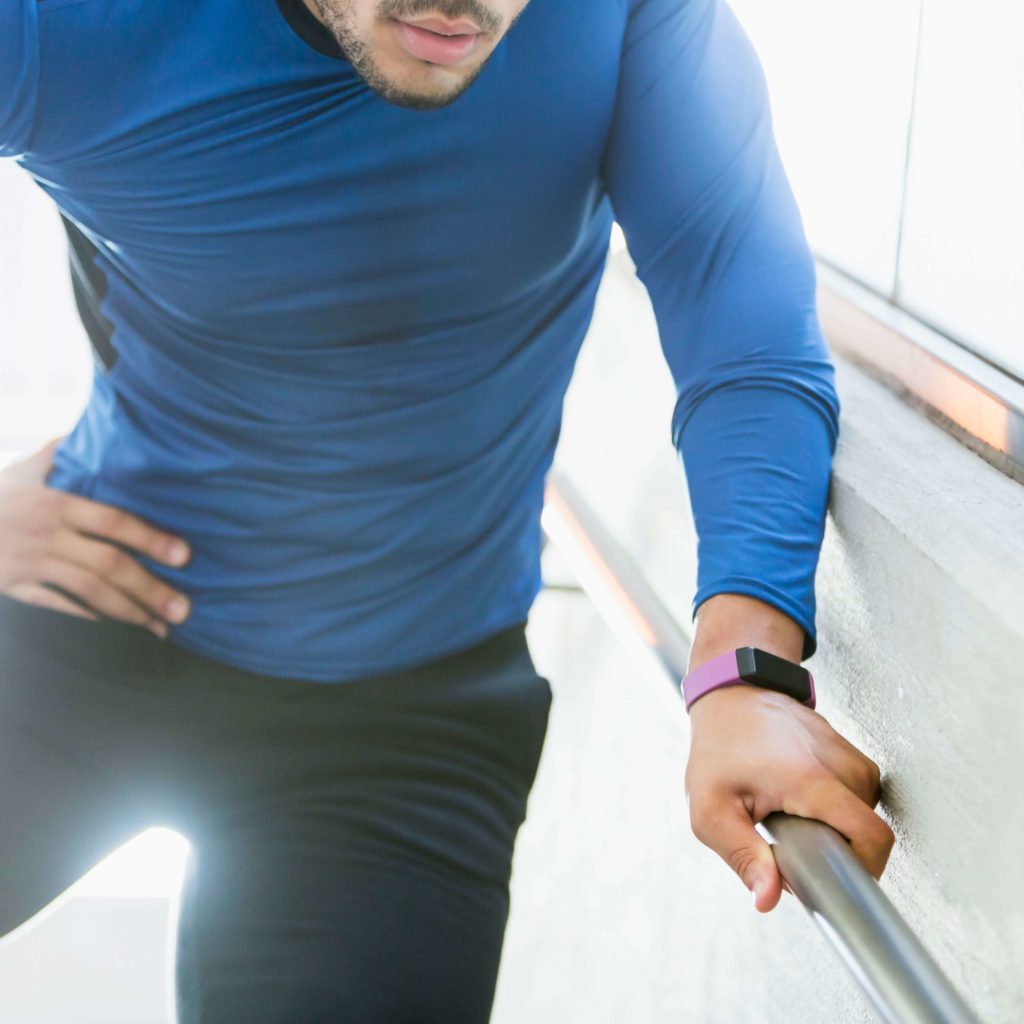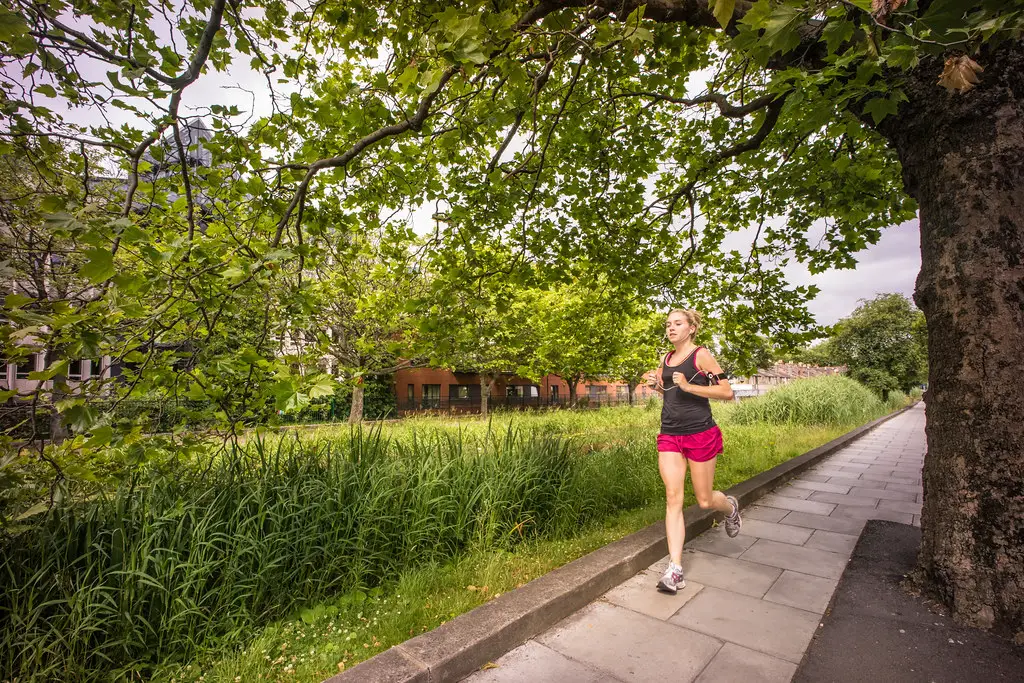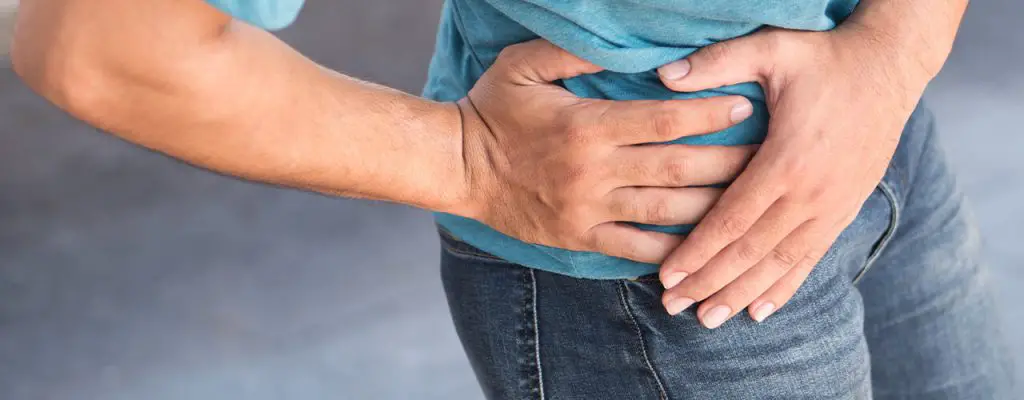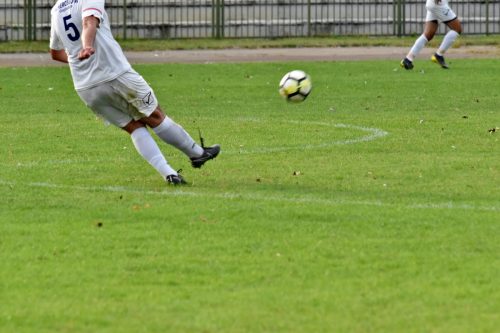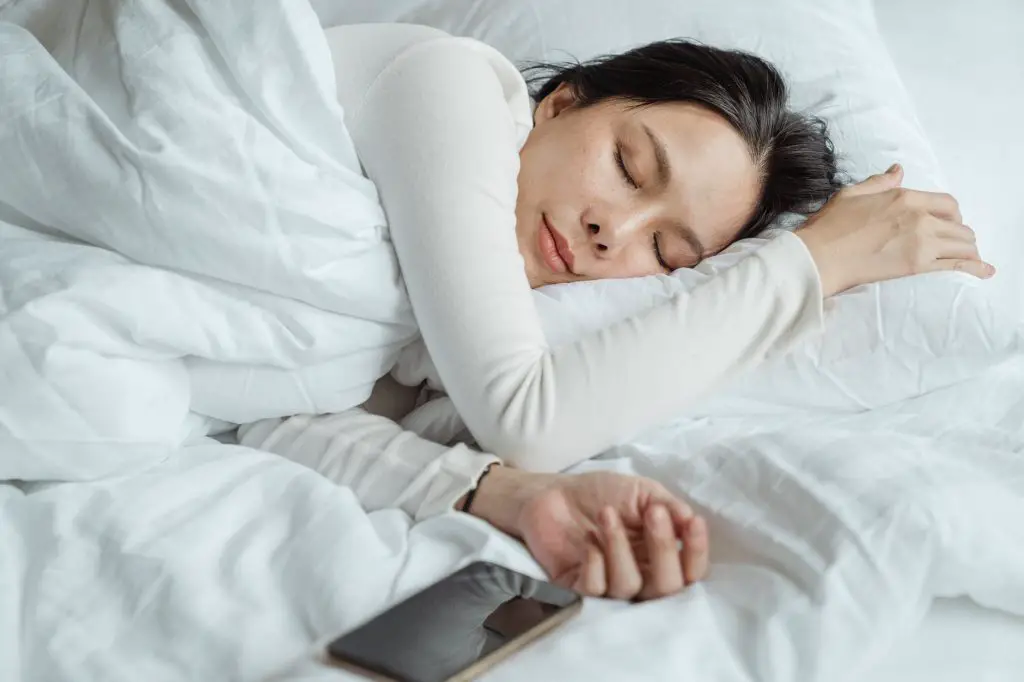Article reviewed and approved by Dr. Ibtissama Boukas, physician specializing in family medicine
Have you ever heard of the psoas muscle? Maybe you think it's related to your back pain, which is why you're looking for safe stretches to loosen this muscle that many blame for your pain?
In the following article, I show you 6 progressive psoas stretches that I often offer to my patients. But before, it is advisable to check if the stretching of this muscle is really necessary in your case. We'll identify why (and when) psoas stretching is suggested, and when it's best to consider other treatment options.
The psoas muscle of the soul
Some call it "The Muscle of the Soul". Others attribute this muscle attaching to the hips with connections to fear and anxiety.
“(Since) the iliopsoas is connected to the hips, the latter being considered as a place of passage of life experiences (joys, mistakes, abandonment…), it is said that pain felt at this level is a sign of a non-acceptance of the present,” says Sylvie Verbois, Ayurvedic medicine practitioner.
These statements possibly come from the fact that the psoas is a very deep muscle that is located around the abdominal region. Or, the link between the psoas and the diaphragm due to their anatomical proximity, as well as their attachment via ligaments and fascias.
Since the diaphragm is known to be extremely sensitive to stress and emotional shocks, we can extend this theory to the psoas muscle.
Anyway, it seems that the psoas muscle would be responsible for all the evils if we trust the testimonies of certain practitioners. Okay, maybe I'm exaggerating a bit. But is this mysterious (and hard to pronounce!) muscle really contributing to your back pain? And will psoas stretching finally put an end to your chronic low back pain?
Let us continue the lesson in order to shed light on the question.
The link between psoas and back pain
You have pain in your back (or in the front of the hip), and want to know how stretching the psoas can relieve you.
Let's start with a mini anatomy lesson of the psoas muscle to better understand its relationship to the spine. The psoas originates from vertebrae T12 to L5, and attaches to the lesser trochanter of the femur. Basically, it's the only muscle in the human body that attaches the thigh to the trunk.
Its main role is hip flexion (bringing the knee towards your shoulder). It also has other roles involved in hip movements, and trunk stability.
The iliac, on the other hand, is a muscle that originates from the iliac crests and attaches to the lesser trochanter of the femur, just like the psoas. This is why you've probably heard of 'iliopsoas' or 'iliopsoas'. Basically, this term refers to the meeting of the iliac muscle and the large psoas (as well as the small psoas, but this fickle muscle is present in only 60% of the population.)
If you have a lumbar hyperlordosis (an exaggerated hollow in your lower back), you may be told that your psoas muscles are in the short position. Why ? Because the psoas-iliac attaches in front of the trunk and the pelvis, and its retraction could create an anteversion of the pelvis, and thus increase the lumbar lordosis.
The antagonist muscles to the psoas are the glutes and hamstrings (they attach to the back of the pelvis). If we go back to the previous explanation, we can conclude that a weakness of these muscles would also contribute to lumbar hyperlordosis. In this case, these back muscles would not be strong enough to hold the pelvis in retroversion (tilt backwards), which would increase the hollowness in the lower back.
This imbalance would result in a condition called “Lower-Crossed Syndrome”. With this in mind, people with lumbar hyperlordosis are often recommended to combine stretching of the hip flexors with work to strengthen the posterior chain. This would rebalance the forces on the pelvis, reduce lumbar lordosis, and place the pelvis more in a neutral position.
Sounds like a simple solution, doesn't it? Unfortunately, the reality is a bit more complex…
There are a few problems with this theory. First, there is no guarantee that lumbar hyperlordosis is necessarily associated with back pain. Indeed, the anatomical changes are not necessarily related to pain, in particular because the body has an extraordinary ability to adapt. And even if we observe these differencesmedical imaging!
Admittedly, it sometimes happens that lumbar hyperlordosis is symptomatic. But many people who have never suffered from back pain nevertheless have a huge hollow in their lower back. A clinical examination will verify whether the back pain is related to the structural differences observed.
Next, a psoas muscle is not always stiff. In some cases, it may be weak, especially on one side more than the other. In this context, it would be preferable to STRENGTHEN the psoas (and not stretch it!) in order to correct the muscular imbalances possibly related to back pain. We will come back to this later.
On the other hand, a psoas muscle CAN sometimes lack flexibility, and be "stiff" or "hypertensive". In this context, the surrounding muscles and structures compensate for the lack of flexibility or stiffness, and back pain can ensue. It is in this perspective that the famous stretching of the psoas can be considered.
How to determine if the psoas lacks flexibility? Through the Thomas test. CThis is a test normally done by healthcare professionals, but you can try it yourself:
Thomas test
- Lie down on your back at the end of the table.
-Using your arms, bend your hip so that your left knee is brought towards your chest.
-Observe your lower limb on the right side. Your leg should be flat on the bed. If it is elevated, this can be interpreted as retraction of the hip flexors (including the psoas).
-Repeat the same on the other side to assess the left lower limb.
When should you stretch your psoas (and why)?
If there is any indication that the psoas muscle is tight, one can stretch this muscle with the intention of reducing back pain. Obviously, any therapeutic correction must be reassessed regularly to determine if it has an influence on lower back pain.
Note that the stretches proposed to soften the psoas are not necessarily specific to this muscle in particular. Indeed, the surrounding muscles (quadriceps, adductors, sartorius, tensor fasciae lata – they are called “hip flexors”) also benefit.
Here are the situations where it can be interesting to stretch the psoas:
- Back pain: Some studies show a increased psoas muscle activity in the presence of low back pain. For this reason, it would be relevant to try to relax this muscle in order to relieve lower back pain.
- Prolonged sitting: Sitting for a long time also results in prolonged hip flexion. By stretching the psoas, we explore other amplitudes of movement by getting out of the pattern of inactivity induced by an exaggerated sitting position.
- Hip mobility: Stretching the psoas is always associated with a hip extension movement. This gain in mobility can improve certain sports gestures (for example, yoga or combat sports) or bodybuilding (“deadlift” or deadlift).
- Cruralgia: If lower back pain radiates to the front of the thigh or hip, you can try stretching that area. In addition to stretching the psoas, it will send a message to the brain with the aim of desensitizing your central nervous system (and therefore indirectly reducing pain). Moreover, this irradiation of pain can come from a cruralgia.
- Regulation of the digestive and sexual system: According to some theories (in osteopathy for example), it may be relevant to work and stretch your psoas in the presence of constipation, digestive disorders, minor sexual dysfunctions, or menstrual cramps. This is because stretching could promote optimal blood circulation in the abdominal and pelvic region, in addition to reducing pressure on the organs. Note that there is no solid scientific evidence to confirm these proposals at the present time. On the other hand, many therapists and patients observe favorable results after osteopathy sessions.
- Tendinopathy: Prevent tendinopathy at this level (on the other hand, although these stretches can bring a level of relief, they do not replace a work of eccentric reinforcement).
- Thomas test: As mentioned in the previous section, a positive Thomas test may imply retraction of the hip flexor muscles.
When should you AVOID stretching your psoas (and why)?
The stretching of the psoas is not indicated for all neither situations, nor for all the cases. Indeed, an inappropriate or badly dosed stretch could aggravate your condition instead of relieving you!
Let's explore together the situations where it is preferable to opt for other therapeutic modalities than stretching.
3 situations where it is best to avoid stretching the psoas:
- En acute phase: If you feel a sharp and sharp pain in the front of the thigh, or in the groin, it may be inadvisable to stretch the psoas – especially in an excessive and static way. On the contrary, it is possible that a relative rest of the region is necessary, and that the inflammation must be reduced initially (for example by applying ice, or by using anti-inflammatories). Of course, this does not preclude being active by straining surrounding structures, as long as it is done painlessly and in a controlled environment. A health professional is best suited to guide you if you ever suffer from acute pain.
- Muscle Weakness: If you've stretched your psoas over and over again without success, your psoas may be weak and not stiff! Indeed, a weakness of a muscle can in the long run be likened to a feeling of stiffness. Patients, in this case, make the mistake of doing excessive stretching, when it is better to opt for specific strengthening. Of course, symptoms should be reassessed regularly to determine if this strategy is providing beneficial results.
- Decreased lumbar lordosis: Small problem here, because we mentioned earlier that the theory of "Lower-crossed syndrome" was questionable from a scientific point of view. But if we take up the explanation that a retracted psoas accentuates lumbar lordosis, it would therefore be illogical to stretch the psoas for those who have a "flat" lower back (because we would precisely like to maintain a tension of the psoas which would increase the lumbar curvature!).
Psoas and bowel pain: What's the link? (Explanation)
Article reviewed and approved by Dr. Ibtissama Boukas, doctor specializing in family medicine When…
Psoas pain after a hip prosthesis: what to do?
It is normal to see a patient suffering from pain after a total arthroplasty of…
Psoas pain and running: what is the link?
The psoas is a deep, elongated muscle connecting the upper and lower...
Psoas tendonitis healing time (How much?)
Persistent pain in the groin or hip fold may mean…
Psoas Tear: Definition and Management
A psoas tear is a relatively rare injury that can occur in athletes….
Painful psoas at night: What to do? (tips)
Do you suffer from psoas pain? This is a common problem that can…
6 psoas stretches (as a progression)
I hope that you are now more educated on the psoas muscle, and that you have taken knowledge of the situations where it is appropriate to stretch it. For example, the Thomas test will have given you an indication of the retracted psoas muscle in your case.
Here are 6 stretches you can do to stretch the psoas (and the surrounding muscles that make up the hip flexors). They are grouped in the form of positions to ensure safe and efficient progression:
Lying psoas stretch:
- Lie on your back and pose a yoga block in your lower back.
- Using your arms, bring the opposite knee towards your shoulder, adding pressure.
- The other leg (the one to be worked on) should be extended.
- Hold the position for 30 seconds and repeat 3 times.
- PROGRESSION: Stand at the end of the table and let your leg hang down.
Stretching the psoas in the “knight” position:
- Get into a knight position so that the treated leg is at the back.
- Keeping the trunk straight, step forward until you feel a stretch in the front of the thigh.
- Hold the position for 30 seconds and repeat 3 times.
- PROGRESSION: Bring the heel of your back leg towards the pelvis by pulling with your hand. Place a yoga blog or pillow under your back leg as needed.
Standing psoas stretch:
- Stand in a forward lunge position (the back leg is the leg to be treated).
- Keeping the trunk straight, step forward until you feel a stretch in the front of the thigh.
- Hold the position for 30 seconds and repeat 3 times.
- PROGRESSION: Place your back leg on a table.
Additional stretching tips
- Do not do these stretches passively BEFORE an effort. Indeed, recent studies have shown that a extended stretching before exercise could increase the risk of injury, in addition to decreasing the tensile strength of the muscle.
- When performing stretches, it is always best to combine them with a slow and deep breathing. This is because the tension built up in a muscle comes mainly from the central nervous system (your brain). It is suggested that breathing exercises promote general relaxation; so don't forget to breathe slowly and deeply to optimize the effect of stretching.
- Avoid prolonged sitting: Whether it is due to a “retraction” of the psoas, or simply to the inactivity induced by excessive sitting, it is clear that a sedentary lifestyle is often associated with back pain. Whether you are at work or at home, vary your positions regularly, straighten your back, in short, stay on the move!
- Respect the concept of progressive overload: If you ever have more pain in the front of the hip after having been “too” active (following a long hike or jogging session, for example), you will need to on the contrary modulate intensity and frequency of your activities. Whether it is a relative rest or an adjustment of your sports practices, a health professional can help you in this process.
- Besides stretching, there are other ways to relax the psoas muscle and surrounding muscles. Massages, foam rollers, balls, all these methods are often offered by health therapists, and online. I recommend that you go gradually, because too much pressure in the abdominal region can sometimes turn out to be dangerous.
There are several products and accessories available on the market to relieve psoas tension. Among the products recommended by our professionals, we have:
- 【Multifunctional Physiotherapy】The acupressure kit set includes an acupressure mat and pillow, and 2 massage balls. You can use the acupressure set in different ways and on different parts of the body, such as lower back pain, insomnia, chronic stress, fatigue, tension, circulatory disorders, etc.
- 【Safe and Premium Material】The acupressure mat massager, cushion cover and storage bag are made of 100% cotton, the inside is 21D high-density eco-friendly sponge. The massage nail is made of non-toxic ABS plastic. 100% natural without side effects, hypoallergenic.
- 【Natural Ancient Indian Healing】 The acupressure mat has 230 massage nails, 6210 massage points, the pillow has 73 massage nails, 1971 massage points. Your weight is evenly distributed into thousands of small pieces to stimulate countless acupuncture points. Ideal for relaxation and promoting circulation. The size of the acupressure mat is 68*42cm, the size of the massage pillow is 37 x 15 x 10cm.
Last updated on 2025-08-21 / Affiliate links / Images from the Amazon Partners API
- 30 LEVELS Massage Gun:ALDOM massage gun Choose the speed and massage heads that best suit your needs can quickly eliminate lactic acid produced after exercise, and for everyday relieve muscle pain, back and neck aches and stiffness, greatly reducing the time muscle recovery.
- Long Battery Life: Equipped with high quality battery, the muscle massager can keep working about 6-8 hours after charging, while the cooling system can effectively remove excess heat, if the battery is low, there will be a red prompt.
- Less than 45 dB Ultra Low Noise: ALDOM muscle massager gun which features high performance and low noise. features advanced technology and high-torque non-brushed electric motor, Featuring the high-precision mold which tightly connects the machine head and the body, The high-torque motor rotates 1800-4800 times per minute and achieves your tissue to loosen the fascia (connective tissue)
Last updated on 2025-08-21 / Affiliate links / Images from the Amazon Partners API
- BACK MASSAGE ROLLER TO RELIEVE YOUR MUSCLE PAIN: relieve your muscle pain and tension with the Core Balance pimpled foam roller. Roll the muscle massage roller placed under your muscles to break up soft tissue adhesions and target painful trigger points (muscle knots).
- DEEPER MYOFASCIAL RELEASE: Our back massage roller features a hollow plastic body with a nubbed foam exterior for deeper myofascial release. The nubs on this back roller act like the hands and fingers of a massager to target, relax and release tight muscle knots much more effectively.
- IMPROVE YOUR PERFORMANCE: Rolling the back roller over your muscles releases toxins, and increases the flow of blood and oxygen to the target area. Massage your muscles with our fitness roller before or after a workout to boost your performance, speed up your recovery time and protect you from injury.
Last updated on 2025-08-21 / Affiliate links / Images from the Amazon Partners API
- Compex and TENS (electrical stimulation)
- TO IMPROVE YOUR STRENGTH, ENDURANCE, RESISTANCE, REGAIN MUSCLE VOLUME AND RECOVER BETTER: The Compex SP4.0 is the electrostimulator designed for athletes who wish to improve their physical preparation, recover better, relieve their pain and have a solution for their rehabilitation.
- 30 PROGRAMS: 10 physical preparation programs, 5 recovery/massage programs, 8 pain relief programs, 5 fitness programs and 2 rehabilitation programs.
- 4 INDEPENDENT CHANNELS: With 4 independent channels, you can simultaneously work both thighs or both arms or the entire abdominal strap (abdominals + lumbar) for example.
- 【Premium Quality, Powerful Pulse】: Are you looking for a TENS pain relief massager for pain relief and muscle recovery? Easy@Home EHE012PRO is a professional quality, natural and highly effective muscle electrostimulator device with electronic muscle stimulation effect. The design of this TENS & EMS with powerful pulse intensity is not only suitable for pain relief and muscle relaxation, but also for muscle recovery.
- 【Effective Massage Therapy】: This electrostimulation muscle physiotherapy machine is equipped with 20 power levels, 5 automated massage modes and 3 traditional massage modes. It is approved for home use over the counter as an effective pain relief device. TENS & EMS is an ideal gift for birthday, Thanksgiving, Christmas.
- 【Easy to Use】: The muscle electrostimulator with a large backlit LCD screen has 8 fully automated massage modes and 20 adjustable intensities. Please make sure the electrodes are connected to the skin and the wires are correctly plugged into the massager. The patches should be used in pairs of 2 or 4, with each pair connected to a conductor wire. The massager symbol A or B flashes to indicate that they are in standby mode, and you can change their intensity with the (+) or (-) buttons.
Last updated on 2025-08-21 / Affiliate links / Images from the Amazon Partners API
What about natural remedies?
Although they are not supported by solid scientific evidence, several natural products and home remedies are used to treat various body pains, especially for their anti-inflammatory power.
Here is a non-exhaustive list of plants and essential oils that are effective in controlling pain and inflammation:
- Turmeric : Thanks to its antioxidant and anti-inflammatory powers very powerful, turmeric is one of the most used plants in a culinary and therapeutic context. The composition of turmeric is essentially made of essential oils, vitamins (B1, B2, B6, C, E, K) and trace elements. But it is to its composition rich in curcumin and curcuminoids that we owe them and calm skin of this spice.
- Turmeric Capsules with Black Pepper – Turmeric is known for its healing properties…
- Turmeric Capsules Rich in Vitamins and Minerals – Turmeric is an excellent source of…
- Alternative to Turmeric Powder – These turmeric capsules are multi-purpose, they…
Last updated on 2025-08-21 / Affiliate links / Images from the Amazon Partners API
- Ginger : In addition to the special flavor it brings to the kitchen and its aphrodisiac properties, ginger is a root well known for its anti-inflammatory powers. THE gingerol gives it its anti-inflammatory action. It is an active component acting on the inflammatory pain related to chronic joint inflammatory diseases, including rheumatoid arthritis, lupus, rheumatic diseases, etc. It has been proven that this active element is also effective in acting on the inflammation linked to arthritis and sciatica. Ginger also has other benefits thanks to its high potassium content and its richness in trace elements (calcium, magnesium, phosphorus, sodium) and vitamins (provitamin and vitamin B9).
- 【Natural Ginger Foot Patches】: Natural Foot Detox Patch with Ginger and…
- 【Ginger Anti Swelling Detox Patch】: Ginger Detox Patches are natural,…
- 【Removes Body Toxins】: Ginger Foot Patches helps reduce the buildup of…
Last updated on 2025-08-21 / Affiliate links / Images from the Amazon Partners API
- Omega-3s : Omega-3 are polyunsaturated fatty acids that play a very important role in the functioning of our body. They are provided by food in three natural forms: docosahexaenoic acid (DHA), alpha linolenic acid (ALA) and eicosapentaenoic acid (EPA). Beyond their action on the brain and the cardiovascular system, omega-3s prove very effective against inflammation. Indeed, they have the ability to act on the inflammatory mechanisms in osteoarthritis by slowing down cartilage destruction, thus they reduce the intensity of osteoarthritis pain. Sciatica, being most often linked to an inflammation secondary to a herniated disc, it can also respond to omega-3 provided it is consumed regularly.
No product found.
- Lemon eucalyptus: Eucalyptus is a plant most often used in the form of herbal tea or essential oil. She would have anti-inflammatory effects which give it the ability to act on the bone and joint pain in general and the pain of sciatica in particular.
- Eucalyptus Citriodora Essential Oil.
- 100% pure.
- Botanical name: eucalyptus citriodo.
Last updated on 2025-08-21 / Affiliate links / Images from the Amazon Partners API
- wintergreen : Wintergreen is a shrub from which a very interesting essential oil is extracted. It is one of the most used essential oils in aromatherapy. This oil extracted from the shrub bearing the same name, is used in massage to relieve sciatica and act like a analgesic. Indeed, it provides a heating effect thanks to its ability toactivate blood circulation locally.
- PROPERTIES ORGANIC WINTERGOOD ESSENTIAL OIL: Wintergreen essential oil is…
- DIRECTIONS FOR USE: Refer to the instructions or ask your pharmacist for advice, This…
- PURESSENTIEL DNA: A range of 55 essential oils essential for well-being in the…
Last updated on 2025-08-21 / Affiliate links / Images from the Amazon Partners API
Conclusion
So! The main objective of this article is to provide you with effective and safe stretches for your psoas. On the other hand, you have to understand that an inappropriate or badly dosed stretching can do you harm instead of relieving your back pain.
For these reasons, be sure to stretch your psoas only if your condition calls for it. Also do the stretches gradually, as taught above.
If in doubt, seek the help of a health professional who will be able to guide you and adapt the stretches to your particular situation.
Good recovery!
My name is Anas Boukas and I am a physiotherapist. My mission ? Helping people who are suffering before their pain worsens and becomes chronic. I am also of the opinion that an educated patient greatly increases their chances of recovery. This is why I created Healthforall Group, a network of medical sites, in association with several health professionals.
My journey:
Bachelor's and Master's degrees at the University of Montreal , Physiotherapist for CBI Health,
Physiotherapist for The International Physiotherapy Center

